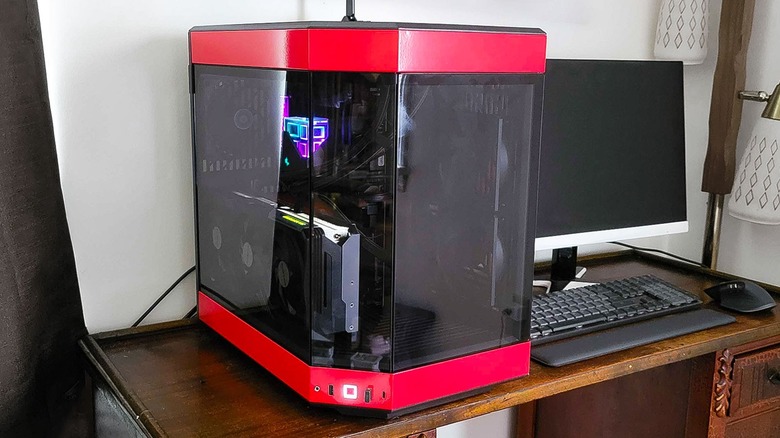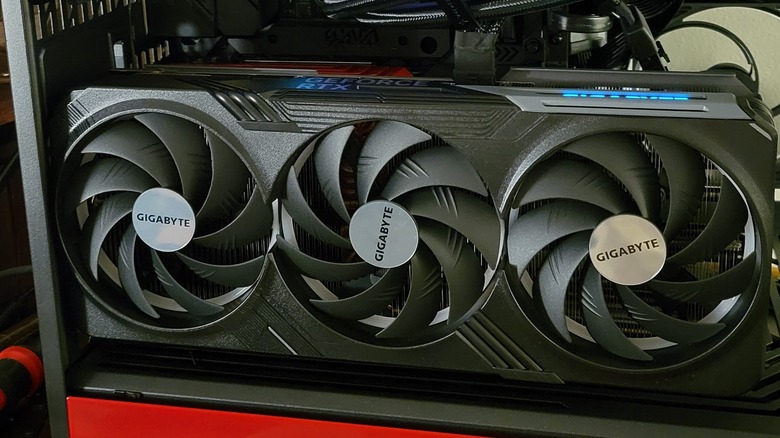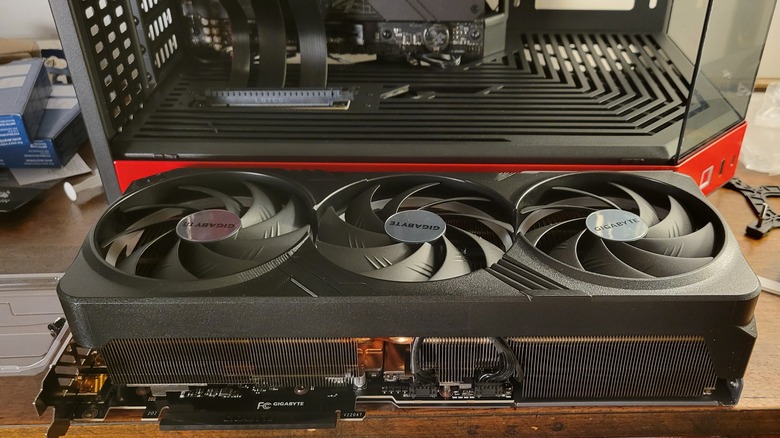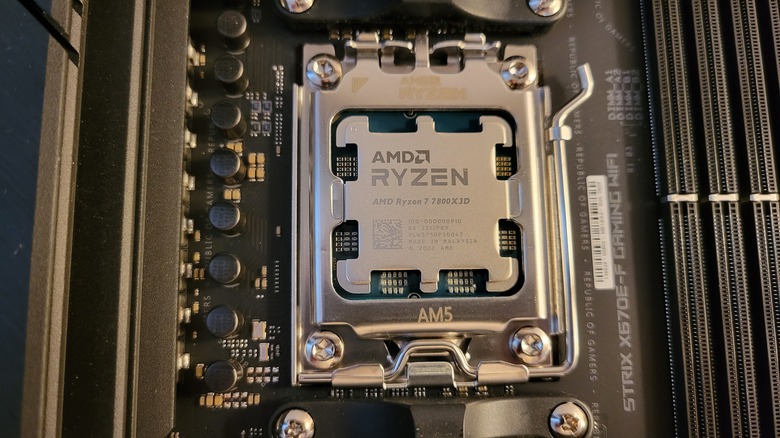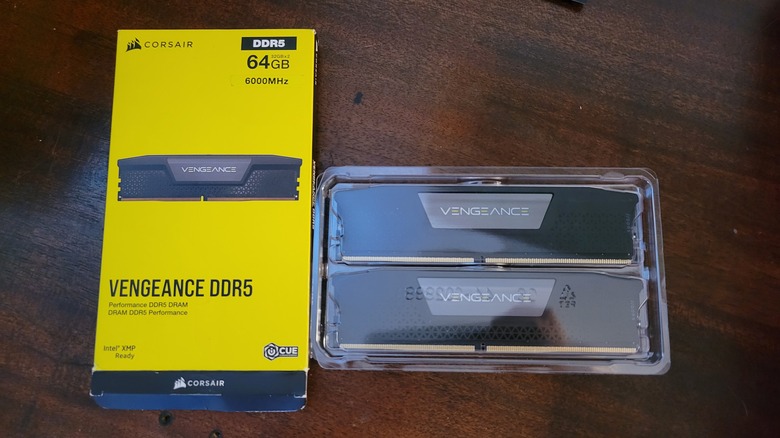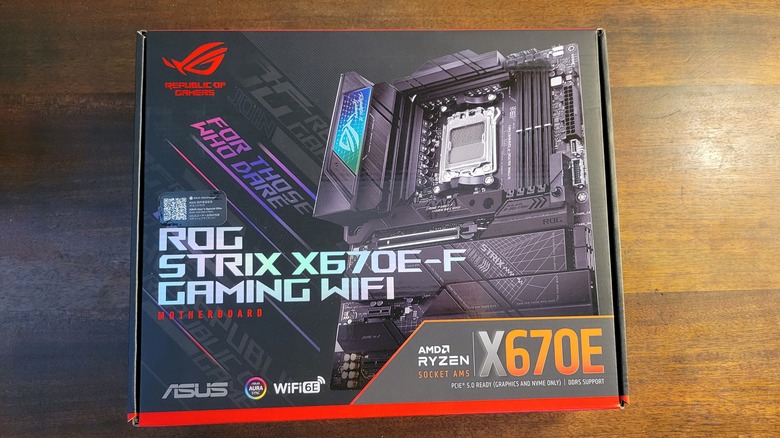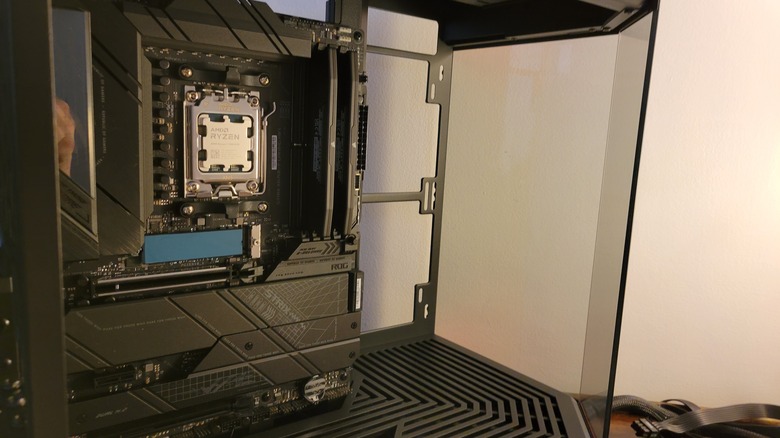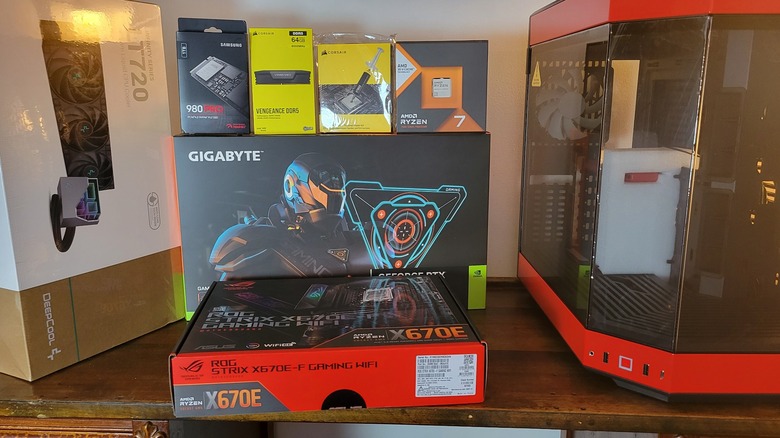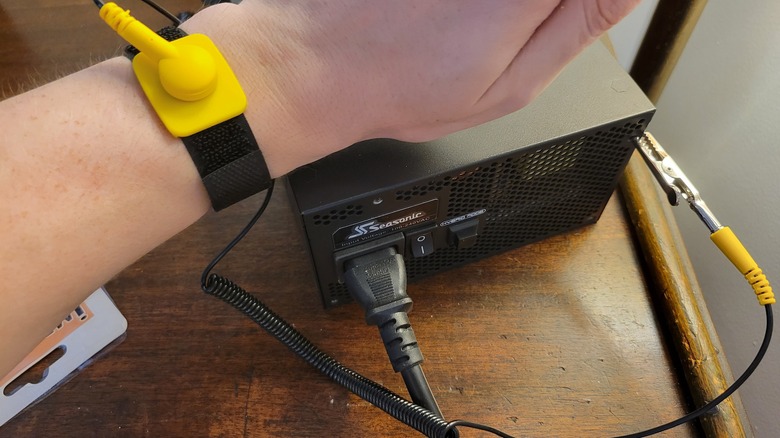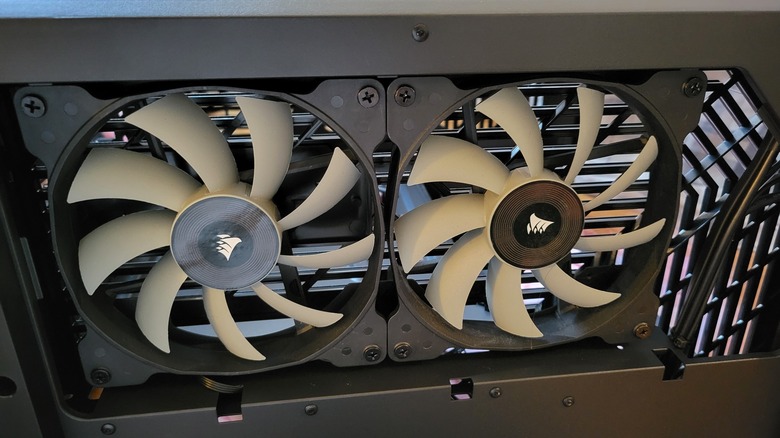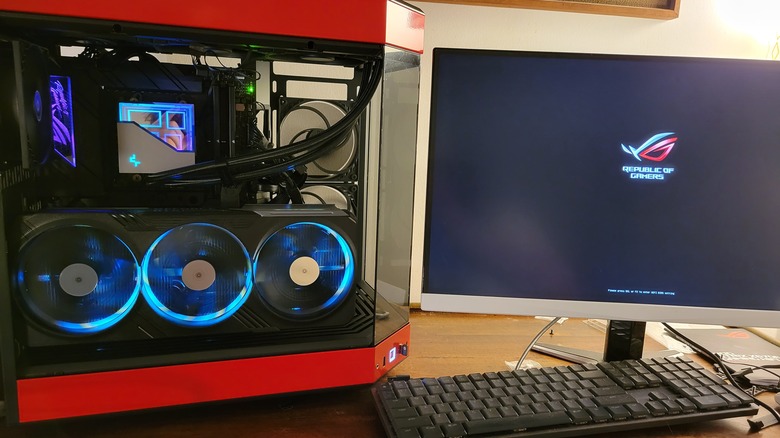I Just Built A DIY $3k Gaming PC - Here's What I Regret
We may receive a commission on purchases made from links.
Building a PC is not as complex as it looks, and is something plenty of people with an interest in tech will dabble with at least once. Yes, there are a few scary bits, but in practice, it's more like a very easy 3D jigsaw than anything technical or complicated. I'm not actually sure how many PCs I've assembled in my life, but it's definitely well into double figures. I'd like to think I'm past the point of making silly mistakes, but there's one basic — and costly — error I keep repeating.
Any good PC build should start with a rough idea of the specs you want to end up with, a firm budget, and some key parts already in mind. Unfortunately, my budget went out of the window and I ended up attempting to make a machine worthy of the enthusiast-level GPU I impulse-bought. Going overboard on my graphics card was the first mistake I made, and everything went steadily downhill from there.
The good news is, I have a PC that's probably worth around $3,000. The bad news is, I could've probably spent a lot less and gotten everything I needed. Here's a detailed look at what happened, and how my budget ended up going in the bin.
My original plan was simple
I didn't actually plan on building a gaming PC. I have a broken gaming PC, which was killed by my own hubris, and a fairly high-end gaming laptop. But then Prime Day happened, and it put an idea in my head. I managed to kill my old PC a few years back by taking it apart and packing the key bits with my carry-on luggage for the trip home. I'm still unsure exactly what went wrong, but it ended up toast and I'm fairly certain I managed to goose the GPU.
So, I talked myself into picking up a new GPU during Amazon's annual sale, which would hopefully bring the old machine back to life and make it noticeably more powerful than it was before. That GPU impulse buy was probably going to be an NVIDIA RTX 4070, and I was hoping to snag one for around $500. Unfortunately, circumstances conspired to take things far beyond that. My original plan for a relatively cheap upgrade/repair job swiftly transformed into a very expensive, fresh build. Looking back, it's actually amazing how one part became a more expensive part, and then everything on my old rig was replaced bit by bit before said expensive part had even been delivered. In short, certain circumstances made buying a 4080 — which is a significantly better card than its little brother — an enticing prospect, and I just ended up rolling with it from there.
I went beefy on the graphics card to save money
Without going into detail, I managed to wrangle it so I could get around $250 back on the purchase of certain GPUs. I decided that adding the 250 to my $500 impulse budget instead of subtracting it would work for me. It wasn't necessarily a good idea, but the idea of a more powerful card for the same net expense was very appealing. Little did I know that this was a very slippery slope and would result in me parting with what is roughly the cost of a functional used car in some places.
Unfortunately, that bonus money only applied to a select few GPUs, and the choice came down to an NVIDIA GeForce RTX 4080 priced at around $1,182, and a beefed-up 4090 costing close to $2,000. Being "budget-conscious" at the time I took the opportunity to nab the 4080 for what in real terms is less than $1,000 after tax — and is close to what it should arguably have been priced at all along. This made me overlook the fact I was both significantly overspending, and transforming what was a silly impulse purchase into something else entirely.
Although the sticker price was essentially double my budget, and my impulse purchase was a four-figure one, I still feel like this was a somewhat sensible choice. Sadly, things were only going to get sillier from here and this action would eventually join a lot of other things in the regret pile.
One part led to another
So I had a beefy new graphics card, arguably the second-best one on the market. It's capable of playing games in 4K with ray tracing — though you do need some weird AI magic to achieve a decent framerate. I could dump this into my old rig, bring that back to life, and I'd only be about $1,000 down. But it wasn't that simple.
Thoughts started running through my head, and I became unsure if the core of my old rig could do my new card justice. I mean, I was reviewing it. What if my older Ryzen 3 series GPU bottlenecked it (it probably wouldn't)? And what if it wasn't my GPU that had packed up a couple of years ago, but my motherboard instead? A motherboard isn't expensive, you can grab one for $150. AMD has also recently released the 7800X3D, which is arguably the best gaming processor on the market by a long way. The 7800X3D isn't that expensive either, coming in at under $450 in many cases.
The motherboard I picked that could handle a 7-series chip did cost $200, but this sort of made sense. It was a clear upgrade on my old one, offering PCIe 5 ports, WiFi 6e, more M.2 slots, and a whole host of other features. Logically, this expensive set of additions would save me money in the long run as it made the PC upgradable for years to come. I can just swap GPUs for another couple of generations and keep the PC high-end.
I went overboard on the RAM
The new motherboard also used DDR5 RAM, which is about twice as fast as you need for gaming — clocking in between 4,000 and 6,400 mt/s. Pulling a DDR4 stick from my old rig simply wasn't an option, it wouldn't even fit if I tried. So I simply had to buy new RAM. What I didn't have to do was buy a whopping 64GB of it. I do want to dabble in video editing, but I'm not quite there yet. Still, it made sense to have the option, so a $100 purchase turned into a roughly $180 one.
On top of that, the frequency of the RAM I selected was also towards the high end at 6,000 MHz. This again was complete overkill. It's actually interesting to think we're only a few years away from DDR6, which will achieve an even greater level of overkill for those who spend a fortune adopting it early.
So while I didn't have a choice with the RAM upgrade, I could have probably gone a lot more basic, bought less of it, and saved myself over $1,000 in the process. For those of you who don't know, RAM technically comes underclocked out of the box and my 6,000 MHz sticks are giving me closer to 4,000 MHz as things stand. You can unlock the RAM's full potential by ticking a box in the BIOS. I haven't bothered yet, because what's the point?
The Motherboard Arrived Damaged
When my new motherboard arrived, there were a few problems. Firstly, whoever works in the warehouse had decided to ship this very delicate part in an unpadded plastic bag, not a well-protected cardboard box. As a result, the fine people at FedEx had managed to knock a few holes in the box. The board itself appeared undamaged, but this was a major red flag. A motherboard can take a punch, appear fine, then randomly die a few months later. While it isn't the most expensive part, replacing it basically involves rebuilding the entire rig, so it's something that should be avoided if possible.
After opening the box, it became obvious the board was used (despite being sold as new) and not as advertised, I was promised PCIe 5 ports, which I totally don't need. So I sent that back and bought a new one, costing closer to $400. My $500-ish impulse buy had now hit around $2,200 before tax.
The more expensive board I'd opted for was an ASUS ROG Strix X670E-F, which was setting processors on fire a few months back due to firmware issues. The way ASUS handled the customer care side of things at the time was pretty catastrophic. Apparently, the firmware issues, and ASUS' warranties, have been fixed. I hope that's the case because the alternative is up to $3,000 worth of hardware getting argued and the company whose part caused the issue telling me that it all sounds like a "me" problem. Still, what's life without risk?
I overspent on the case, but I don't regret that
It was at this point I was running out of parts to recycle from my old rig. But I could easily take the case across, right? It's basically a metal box with some fans, and my old case is relatively new. It even has a USB-C port!
Unfortunately, my hands seemed tied here too. The 4080 is already a massive card and would barely fit in my NZXT case. I might be able to squeeze it in if I lose the radiator and the front fans, but then I have to buy an air cooler for the CPU. It's irrelevant anyway as the particular 4080 I purchased is an extra-large one, so a new case was on the menu.
I ended up opting for a Hyte Y60 — which is awful thermally, especially with a beefy GPU like the one I've bought. It's also $200, which is on the pricier side for a stock case, and some of the parts don't quite fit. The CPU's radiator is sort of "floating" as it stops the screw holes in its bracket from lining up properly. The vertically mounted GPU is "floating" too for similar reasons, and that may be more of an issue.
While this may seem like another few hundred dollars wasted, I actually don't care about overspending on this case. It's red, it looks like a massive fish tank, and it's easy to build in. The issues it has can be mitigated, though you probably shouldn't have to mitigate things on a $200 case, and it looks really cool. Think about it, excessive RGB is for simpletons, and a $3,000 PC that looks like a plain black box is just sad. What else can you do?
There were other parts I could have recycled, but didn't
While there weren't many bits left to take across, there were still a few bits that, cobbled together, might save me a few hundred dollars. One of these was the AIO CPU cooler, which I ended up replacing anyway. I wanted to take advantage of the fact that my new case (sort of) fit a 360mm cooler. So I purchased one of those.
I decided to opt for a bit of new, fancy, thermal paste — $16 worth to be exact, which is about three times the price you would normally pay. There's an old syringe of thermal paste that is more than likely fine in my PC parts box, so this is just a straight expense. There's also paste pre-applied to new cooling systems, including the AIO I bought for the rig, but that doesn't cool as well as a healthy dose of the stuff from a tube, apparently.
Another potential scavenge I opted out of involved the M.2 SSD on my old rig, which only had 560GB of storage capacity. A good chunk of this was taken up by the OS, and that type of storage is pretty cheap now. I ended up buying a couple of 1GB M.2 Samsung sticks on Amazon and decided to leave the old one where it is. At this point, repurposing that as a mid-range rig makes sense. The new build has gone far beyond Ship of Theseus territory.
Some bits almost made it across
There were some parts that made it across. I put the 850W power supply from the old rig in, though a few days later it turned out to be the source of some coil whine, and that too was replaced with a 1000w unit. The new power supply isn't really a regret, it came with one of Corsair's new cables that fits NVIDIA's newer GPUs. This means I can avoid trailing three PCIe cables through the rig, and now just have a single one going from the power supply to the graphics card.
I would also like to add the second SSD from my old rig to the new machine. It has a decent storage capacity, so it makes sense to put it in the new build. It's also an SSD, so it has the benefit of being quiet and fast. On top of everything else, it connects via a SATA port, so it won't take up one of my two remaining M.2 slots. Unfortunately, this piece is currently missing in action. The old rig came back in bits, and the whole experience was so depressing I didn't get around to reassembling it.
As it stands, I've found every major part aside from this one. It was last seen in my bedroom somewhere. With the build complete, the only parts that have made it over from the old PC, and subsequently remained in the rig, are two 140mm fans. These are doing a good job, though they're there to suck in air from below so you won't actually be able to see them. I did actually purchase three new fans for the build, but they're currently elsewhere on the machine.
Not everything is brand new
Despite this essentially being a 99% rebuild at this point, the fans aren't the only older piece I'm using. If you think outside the (metal and glass) box there are actually a few other very expensive parts that are easy to shift from unit to unit. I'm using the same 1440p monitor I've had for a while, and other auxiliary components like the mouse and keyboard were already in my possession when the build began. The same goes for things like cables and gaming controllers. While using one GPU for multiple rigs would be at best, a massive pain, and at worst totally impractical — you can have multiple devices hooked up to something like a monitor at the same time without creating any issues.
I also have an external SSD with a bunch of games on it, which spends time bouncing between my various devices. From a logical standpoint, installing the same game on three or four different PCs is a literal waste of space. Instead, this drive takes the burden for a good chunk of my Steam library, while the few (if any) games that would really benefit from being installed on an M.2 drive get that treatment instead. While these parts aren't technically PC components, it is one of the areas where I've actually saved a few hundred dollars and stuck to it. I realize I'm clutching at straws here, but what else can I really do at this point?
Part of me regrets not spending more
Weirdly enough, my main regret is not actually spending more. The fact I bought a fancy GPU inspired me to go wild on every other part in an effort to do that graphics card justice. But I went so overboard, having the second-best GPU on the market and not handing over a few hundred more for the best one I could possibly get seems silly. I realize, at this point, my head has totally gone and I'm beyond help. I've compromised by telling myself that this rig is enough to blast through anything, and I can always go all out when the 50-series of GPUs launches in 2025.
That upgradability was part of the reason I started splashing out on other high-end parts in the first place. That said, NVIDIA's current, controversial, pricing strategy, coupled with a potential crypto-mining revival may scupper my plans. Even if the next gen of GPUs is relatively reasonably priced, there's always a slight chance I'll just go overboard again. So Dave, if you're reading back over this in a couple of years' time put the credit card down, go for a walk, and remember you have other financial responsibilities. You utter imbecile.
